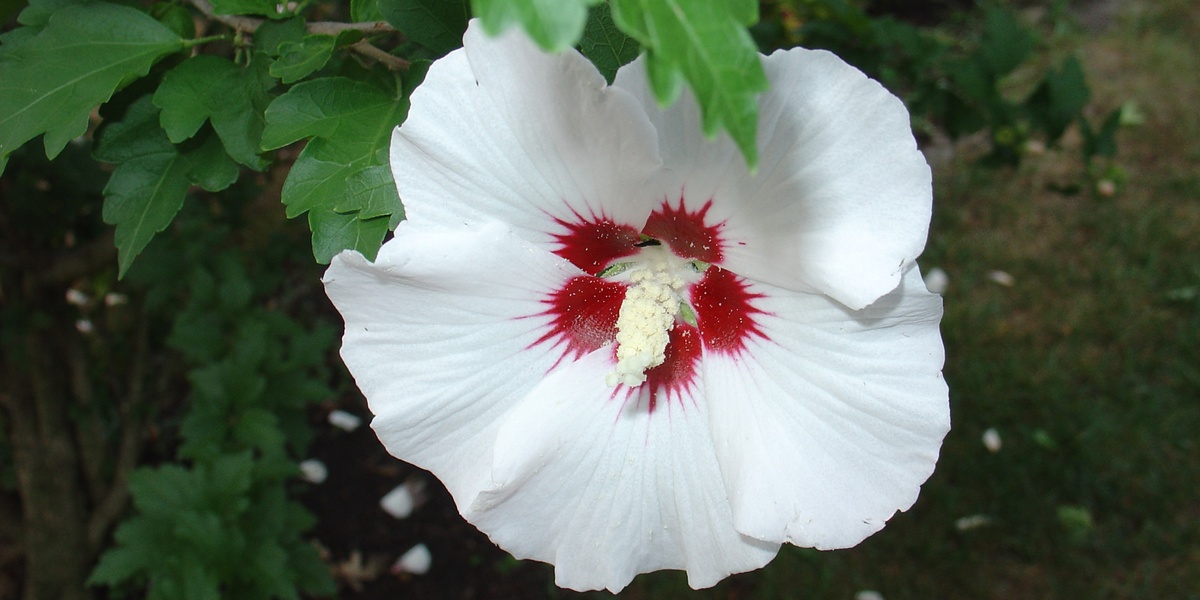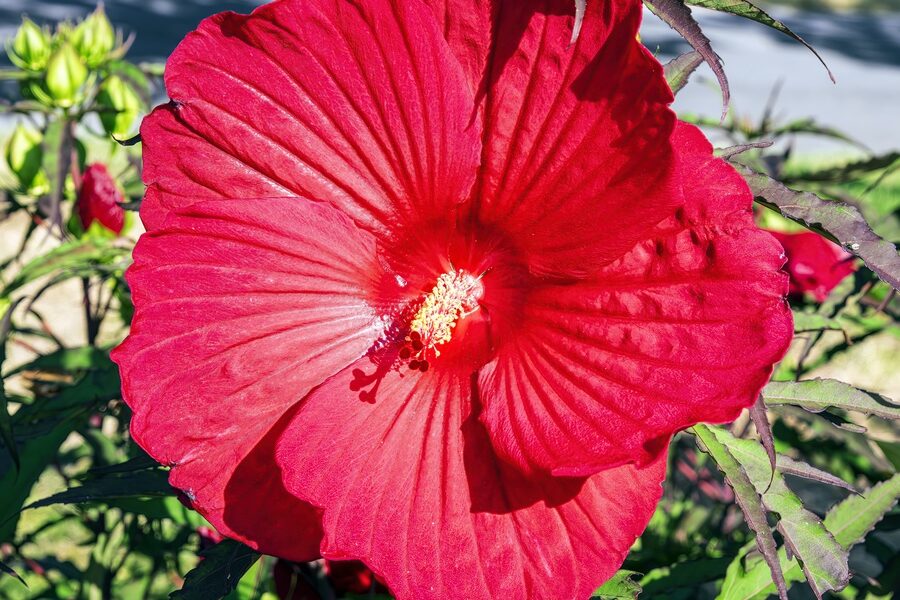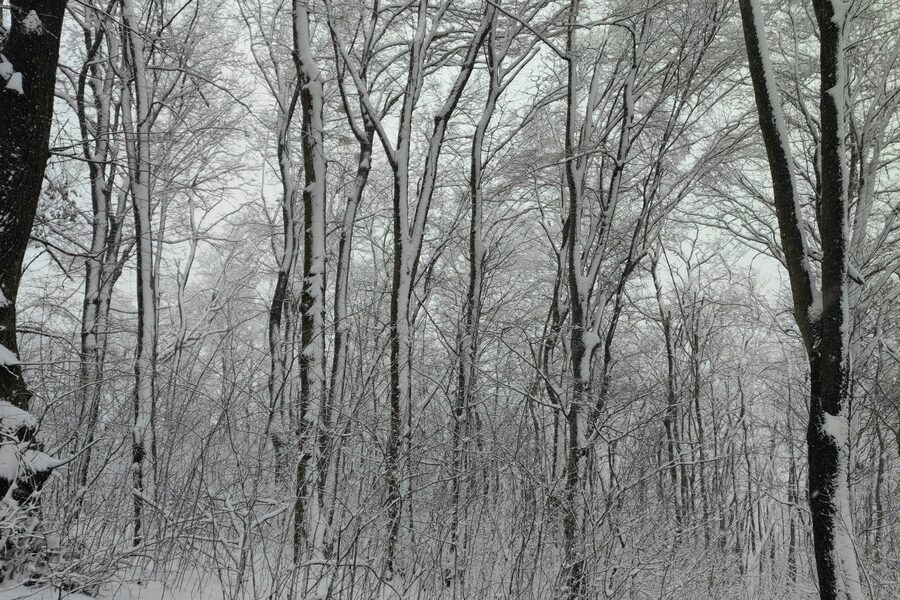South Korea’s changing seasons paint the countryside with distinct floral displays, from spring cherry blossoms to autumn foliage. Gardens, temple grounds and mountain trails each host a different palette, reflecting local climate and culture.
There are 33 Flowers of South Korea, ranging from Aster (Autumn aster) to Wisteria. For each entry, you’ll find below the Scientific name, Bloom months, and Where to see so you can match species to season and location.
When is the best time to see most species in South Korea?
Spring and autumn offer the widest variety: spring (March–May) brings bulbs and blossoms like magnolias and cherry trees, while autumn (September–November) highlights asters and cosmos; summer has lotuses and tropical blooms on Jeju. Check regional bloom calendars since coastal and island areas often flower earlier than inland and high-altitude sites.
Where should I go to view a wide range of native and cultivated flowers?
Visit a mix of botanical gardens, national parks (Seoraksan, Jirisan), Jeju Island for subtropical species, and city parks or temple gardens for cultivated displays; seasonal flower festivals and local tourist boards provide up-to-date viewing spots and bloom forecasts.
Flowers of South Korea
| Name | Scientific name | Bloom months | Where to see |
|---|---|---|---|
| Cherry blossom | Prunus yedoensis | Mar–Apr | Jinhae, Yeouido, Gyeongju |
| Plum blossom | Prunus mume | Feb–Mar | Gwangyang Maehwa Village, Jeju |
| Korean azalea | Rhododendron mucronulatum | Mar–Apr | Seoraksan, mountain slopes nationwide |
| Royal azalea | Rhododendron schlippenbachii | Apr–May | Jirisan, Hallasan slopes |
| Forsythia | Forsythia koreana | Mar–Apr | roadsides and mountains nationwide |
| Kobushi magnolia | Magnolia kobus | Mar–Apr | palaces and urban parks, Gyeongbokgung |
| Camellia | Camellia japonica | Nov–Mar | Jeju coastal forests, southern coast |
| Rose of Sharon (Mugunghwa) | Hibiscus syriacus | Jul–Oct | nationwide parks and roadsides |
| Balloon flower (Doraji) | Platycodon grandiflorus | Jul–Aug | mountain meadows and herbal fields |
| Tiger lily | Lilium lancifolium | Jul–Aug | hillsides and countryside roads |
| Lotus | Nelumbo nucifera | Jul–Aug | Buyeo, temple ponds, wetlands |
| Chrysanthemum | Chrysanthemum indicum | Sep–Nov | autumn flower festivals, parks |
| Canola (Rapeseed) | Brassica napus | Apr | Jeju, west coast fields, Taean |
| Buckwheat flower | Fagopyrum esculentum | Aug–Sep | highland fields, Gangwon and Taebaek |
| Peony | Paeonia lactiflora | May | garden collections, temple and palace gardens |
| Hydrangea | Hydrangea macrophylla | Jun–Jul | temple paths, southern gardens |
| Iris | Iris ensata | May–Jun | wetland gardens, Gyeongju ponds |
| Wisteria | Wisteria floribunda | Apr–May | temple trellises, village lanes |
| Korean bellflower | Campanula takesimana | Jun–Aug | shaded slopes, temple gardens |
| Japanese honeysuckle | Lonicera japonica | May–Sep | hedgerows and parks nationwide |
| Gentian | Gentiana scabra | Sep–Oct | alpine meadows, Seoraksan |
| Daffodil (Narcissus) | Narcissus tazetta | Feb–Mar | parks, temple gardens nationwide |
| Sunflower | Helianthus annuus | Jul–Sep | summer fields, coastal promenades |
| Deutzia (bridal wreath) | Deutzia scabra | Apr–May | temple gardens, residential streets |
| Lilac | Syringa vulgaris | Apr–May | parks and arboretums, urban gardens |
| Multiflora rose | Rosa multiflora | May–Jun | hedgerows and mountain edges |
| Gardenia | Gardenia jasminoides | Jun–Aug | southern gardens, Jeju orchards |
| Cosmos | Cosmos bipinnatus | Sep–Oct | autumn fields and festivals |
| Tea flower | Camellia sinensis | Oct–Nov | Boseong tea fields and plantations |
| Red spider lily (Higanbana) | Lycoris radiata | Sep–Oct | rice-paddy edges, rural paths |
| Japanese snowbell | Styrax japonicus | May–Jun | temple precincts, traditional gardens |
| Korean wild rose | Rosa rugosa | Jun–Jul | coastal dunes, seaside paths |
| Aster (Autumn aster) | Aster koraiensis | Sep–Oct | rocky slopes, coastal meadows |
Images and Descriptions

Cherry blossom
Showy pale-pink clusters that carpet streets and riversides each spring. Iconic for Korea’s festivals, especially Jinhae Gunhangje, visitors flock for picnics and nighttime illuminations when blossoms peak and parks fill with celebratory crowds.

Plum blossom
Delicate white to pink five-petaled flowers that bloom late winter. Famous at Gwangyang Maehwa Festival, plum blossoms signal early spring and are prized in Korean poetry, tea culture, and traditional garden scenes.

Korean azalea
Low shrub with bright pink to magenta funnel-shaped blooms carpeting hills in spring. A mountain favorite, admired on hikes and at spring flower festivals for its intense color and early-season display.

Royal azalea
Rounded shrubs producing fragrant pink to white blossoms that cloak ridgelines in April–May. A beloved wildflower, often seen on mountain trails and celebrated for seasonal mountain treks and scenic overlooks.
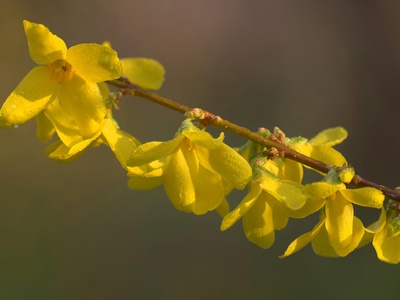
Forsythia
Vivid yellow four-petaled blooms appear before leaves, lining streets and hillsides in early spring. Forsythia marks Korea’s spring awakening and is a common sight during countryside drives and temple approaches.

Kobushi magnolia
Starry white magnolia flowers open on bare branches, filling air with scent. Frequently planted in historic palace grounds and parks, their early-spring blooms are popular with photographers and walkers.
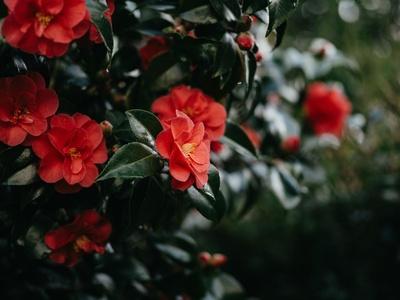
Camellia
Glossy evergreen leaves with rose-like red or pink blooms appearing in winter to early spring. Especially notable on Jeju Island and temple gardens, camellias are celebrated for winter color and traditional crafts.

Rose of Sharon (Mugunghwa)
Large single or double flowers in white, pink, or purple from summer through autumn. Korea’s national flower, ubiquitous in cities and countryside, featured on emblems and during cultural celebrations.

Balloon flower (Doraji)
Blue to white bell-shaped flowers whose buds swell like balloons before opening. Doraji is an important edible/medicinal root and common in markets; Doraji festivals and herbal markets highlight its cultural role.

Tiger lily
Orange flowers with black spots and recurved petals, easily recognized along rural roadsides and terraced hills. Widely seen in summer, tiger lilies add bold color along hiking trails and village landscapes.

Lotus
Large aquatic pads with showy pink lotus flowers rising above ponds in summer. Revered in Buddhist temples and ancient sites like Buyeo, lotus blooms attract photographers and summer festival boat tours.

Chrysanthemum
Diverse autumn blooms in yellow, white, and red used in festivals and tea ceremonies. Chrysanthemums are central to seasonal displays and cultural exhibitions during Korea’s cooler months.
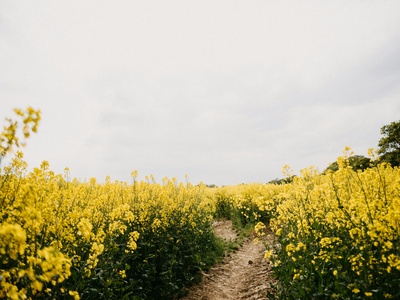
Canola (Rapeseed)
Vivid yellow fields of canola signal spring along coastal and island roads. Popular with tourists for scenic drives and photo stops, these bright seas of yellow are staged in rural festivals and viewing platforms.
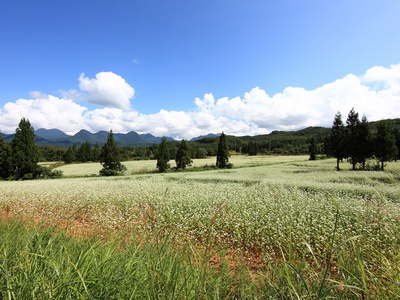
Buckwheat flower
Small white to pink blooms carpeting mountain plateaus in late summer. Buckwheat fields create scenic autumn carpets, celebrated locally and visible along highland roads and harvest festivals.

Peony
Large fragrant pink, red, or white blooms in late spring, often seen in historic gardens. Peonies feature in traditional art and seasonal garden tours, prized for their lush petals and perfume.

Hydrangea
Rounded clusters that shift color with soil pH, blooming in early summer rain season. Hydrangeas line temple walkways and hillside gardens, drawing visitors for serene rainy-season photography.
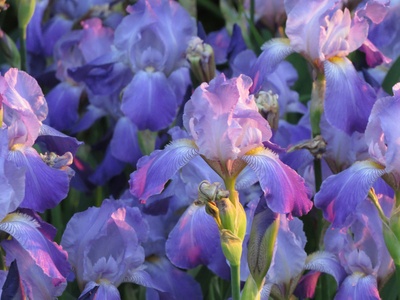
Iris
Elegant sword-like leaves with large flat purple or blue blooms in late spring. Often planted around ponds and historic sites, iris festivals highlight traditional floral symbolism and garden walks.

Wisteria
Fragrant hanging clusters of lavender or white blossoms that drape pergolas in late spring. Wisteria tunnels and trellises at shrines and gardens are popular backdrops for photos and seasonal strolls.

Korean bellflower
Nodding bell-shaped pale-blue flowers on woodland edges and temple grounds in summer. Known locally for delicate blooms, bellflower is also used in traditional cuisine and herb markets.
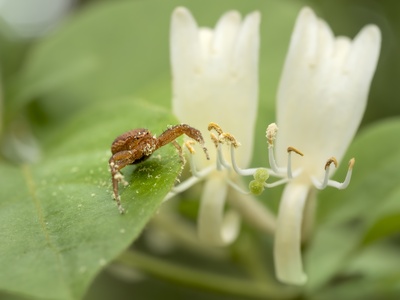
Japanese honeysuckle
Fragrant tubular white-to-yellow flowers that attract pollinators through summer. Common along fences and trails, its scent is nostalgic for many Koreans and marks countryside walks.

Gentian
Deep blue trumpet-shaped flowers in early autumn highlands. Gentians color mountain slopes and are admired by hikers; they also have traditional medicinal uses and alpine wildflower tours.

Daffodil (Narcissus)
Fragrant white or yellow trumpet flowers heralding early spring. Planted in parks and temple terraces, daffodils are popular in spring displays and informal garden walks.

Sunflower
Tall plants with large golden faces that follow the sun, creating summer photogenic fields. Sunflower patches are popular for family outings, seasonal markets, and seaside photo spots.
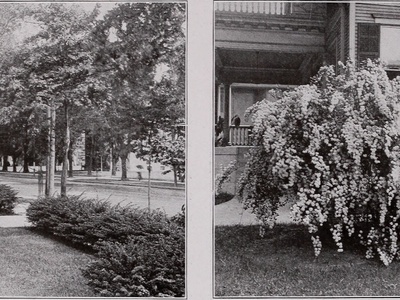
Deutzia (bridal wreath)
Shrubs covered in massed white blossoms in late spring, often trained along walls and paths. Deutzia-lined streets provide delicate spring canopies favored for neighborhood strolls and small festivals.
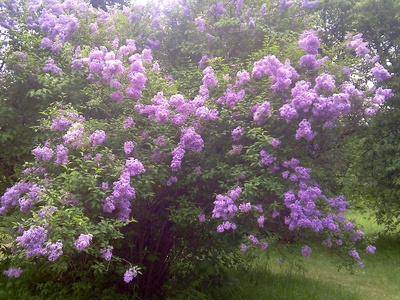
Lilac
Fragrant clusters of violet or white flowers in mid-spring, commonly planted in parks. Lilac-lined promenades attract visitors for their scent and early-spring photo opportunities at arboretums.
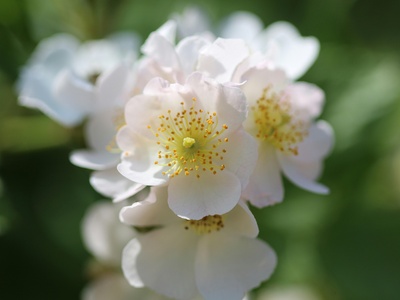
Multiflora rose
Clusters of small white fragrant roses that form hedges and thickets in late spring. Historically used for boundary planting, they bloom prolifically and are a common sight on rural walks.

Gardenia
Glossy evergreen shrub with intensely fragrant white blooms in summer. Gardenias are cherished in southern Korea for perfume and garden charm, often found in coastal gardens and private collections.
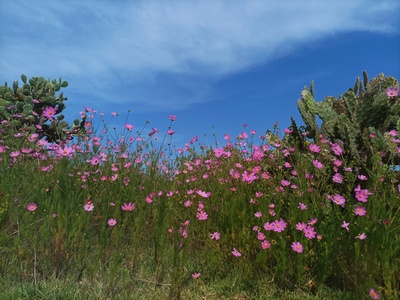
Cosmos
Delicate daisy-like pink, white, and crimson flowers that wave across fall fields. Cosmos season is synonymous with autumn festivals, offering long-lasting color for countryside walks and evening events.
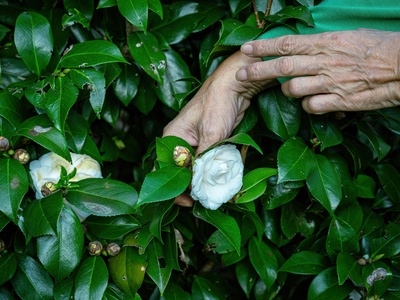
Tea flower
Small white camellia flowers on tea shrubs in autumn amid rolling green plantations. Tea blooms complement harvest season tours in Boseong, where visitors sample tea and enjoy scenic terraces.

Red spider lily (Higanbana)
Striking red, spidery blooms emerging from bare stems in autumn. Common along rural roads and graveyards, this flower carries strong seasonal and cultural associations with autumn rites and photography spots.
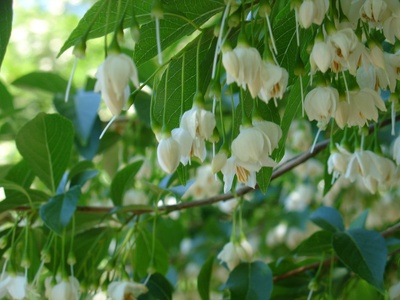
Japanese snowbell
Pendulous chains of white bell-like flowers in late spring. Snowbell trees are planted in historic temple grounds and parks, valued for their graceful spring displays and shade.
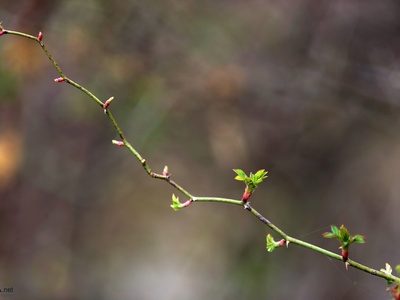
Korean wild rose
Fragrant pink to white blossoms followed by bright hips on hardy shrubs along shores. Rosa rugosa stabilizes dunes and provides seasonal color, popular on seaside walks and coastal nature trails.
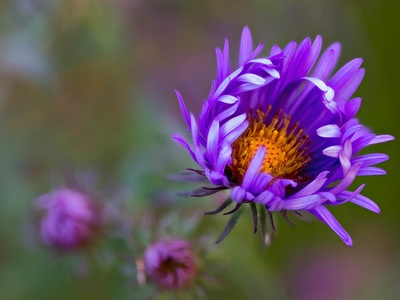
Aster (Autumn aster)
Late-season purple or white daisy-like flowers brightening hillsides in autumn. Asters are common in coastal and upland meadows, celebrated by fall hikers and local floral displays.
